Ash Reshteh | An Iranian Soup for Special Occasions
Ash Reshteh, a hearty and flavorful soup, holds a cherished place in Iranian cuisine as a beloved traditional dish.
This rich and nourishing meal is more than just food; it's a symbol of Iranian hospitality and culinary heritage.
With a history dating back centuries, Ash Reshteh has woven itself into the fabric of Iranian culture, gracing tables during special occasions and everyday gatherings alike.
Its wholesome ingredients and comforting aroma speak to the warmth and generosity of Iranian hospitality, making it a favorite among locals and a delightful discovery for those exploring Iranian cuisine.
Join us as we delve into the history and cultural significance of Ash Reshteh, a dish that transcends mere sustenance to become a cherished part of Iranian identity.
History of Ash Reshteh
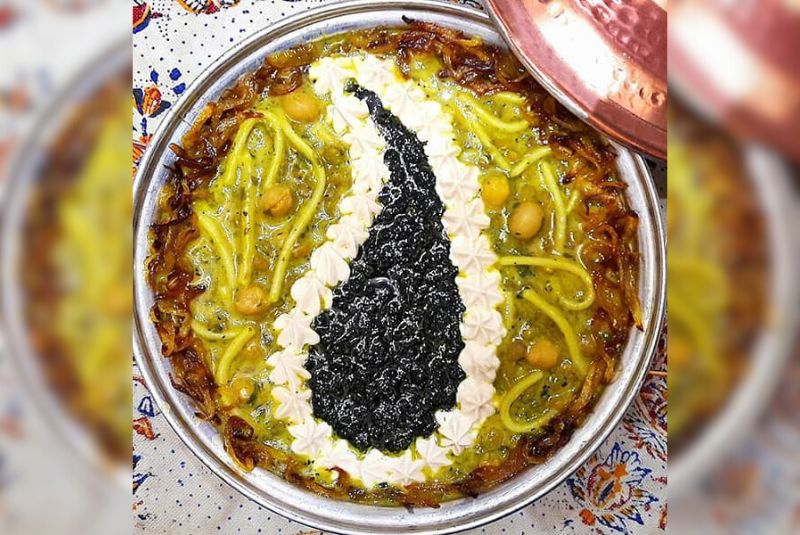
Historically, Ash Reshteh served as a hearty and nourishing meal for Iranian families, particularly during cold winter months or on special occasions like Nowruz, the Persian New Year. Over time, the recipe for Ash Reshteh evolved, incorporating new ingredients and culinary techniques while preserving its core flavors and textures.
The dish's name, "Ash Reshteh," translates to "noodle soup" in Persian, reflecting its primary components of noodles and various legumes.
Today, Ash Reshteh holds significant cultural importance in Iranian culinary traditions. It is not only a delicious and comforting dish but also a symbol of unity and togetherness. In Iranian culture, preparing Ash Reshteh often involves communal cooking, where family members or friends gather to help chop vegetables, knead dough, and simmer the soup. This collaborative effort reflects the value placed on community and sharing in Iranian society.
Moreover, Ash Reshteh is often served during religious and cultural ceremonies, such as Ashura, a day of mourning and remembrance in Shia Islam. Its presence at such events underscores its role as a dish that brings people together, fostering connections and strengthening bonds.
| Suggestion: Persian Food
Ash Reshteh Ingredients
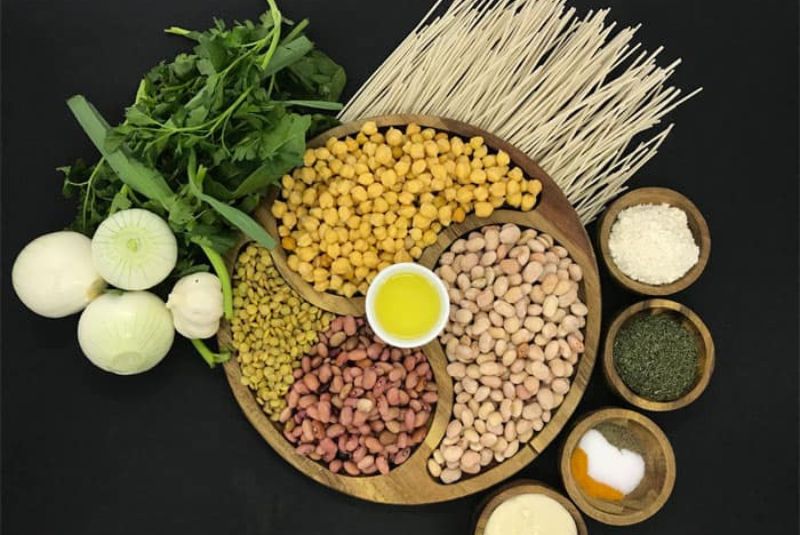
The key ingredients for Ash Reshteh include:
- A variety of legumes such as chickpeas, pinto beans, red beans, and lentils, providing a rich source of protein and fiber.
- Fresh vegetables including spinach, parsley, leek, and coriander, adding vibrant color and nutrition to the dish.
- Aromatic spices like turmeric, which imparts a warm and earthy flavor to the soup.
- Thin Persian noodles known as Reshteh, contributing texture and substance to the dish. (Reshteh, noodles)
- Additional elements such as onions, garlic, Kashk, and oil for sautéing, enhancing the depth of flavor.
| Discover: Unusual Foods in Iran - Weirdly Wonderful Dishes
Variations Across Iran
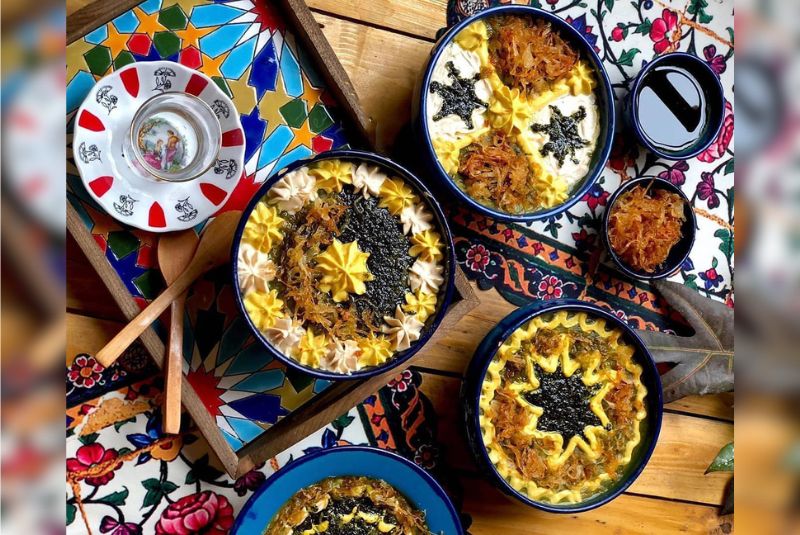
While the basic components of Ash Reshteh remain consistent, there are variations in recipes across different regions of Iran.
Some regions may incorporate additional ingredients such as Trail mix or meat for added depth of flavor and texture. The choice of herbs and spices may also vary, reflecting regional preferences and seasonal availability.
Despite these variations, the essence of Ash Reshteh as a comforting and nourishing soup remains constant, making it a beloved dish enjoyed throughout Iran.
| Suggestion: Abgoosht & Dizi - Traditional Persian Stew Recipe
Ash Reshteh Recipe
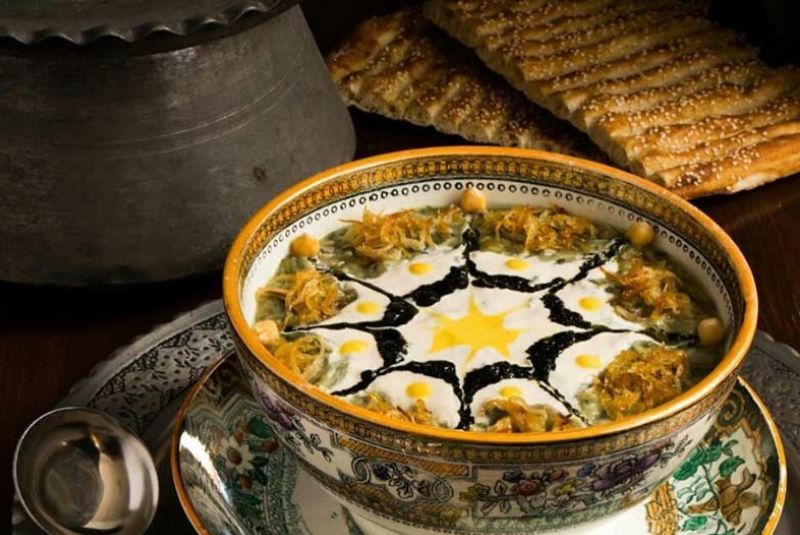
Step-by-Step Instructions:
- Prepare the Legumes: Begin by soaking a mixture of legumes in water for 12 to 24 hours. This soften them and prevent stomach discomfort.
- Sauté Aromatics: In a pan, sauté sliced onions and minced garlic in oil separately until golden brown. Also, sauté mint just for a minute. This forms the flavorful foundation of the soup and adds depth to the dish.
- Cook the Legumes: Add the soaked legumes to a large pot along with water, turmeric, and salt. Bring the mixture to a gentle boil, then reduce the heat and simmer until the legumes are tender and cooked through.
- Add Fresh Greens: Wash and chop a variety of fresh greens such as spinach, parsley, leek, and coriander. Add them to the pot and simmer until they are wilted and fully cooked. Then add half of fried onions and garlic.
- Cook the Noodles: Add thin Persian noodles (Reshteh) directly to the pot of soup. Stir gently to ensure they are submerged in the liquid and cook until tender.
- Garnish and Serve: Serve the Ash Reshteh hot, garnished with Kashk and crispy fried onions and garlic and fried mint.
| Read more: Top 23 Iranian Kebab - Taste the Best, Forget the Rest
Tips and Tricks for Perfect Ash Reshteh
- Ensure your pot is large enough to accommodate all the ingredients. This prevents the noodles from sticking together and allows for even cooking.
- Adding salt before adding the vegetables helps maintain their color and enhances the flavor of the soup.
- Use quality noodles to ensure a delicious texture. Avoid overcooking them to prevent mushiness.
- To achieve crispy fried onions and garlic, fry them in hot oil until golden brown. Be careful not to burn them.
- Be cautious when sautéing mint; over-sautéing can result in a bitter taste and the leaves turning black.
- Adjust the seasoning according to your taste preferences. Experiment with different spices to customize the flavor.
Serving Suggestions and Traditional Accompaniments
- Serve Ash Reshteh hot, accompanied by warm, crusty bread or traditional Iranian flatbread.
- Garnish the soup with Kashk and a sprinkle of fried onions, garlic, and mint for added flavor and texture.
- Pair Ash Reshteh with pickled vegetables, fresh herbs, and a side of creamy yogurt for a complete and authentic Iranian dining experience.
With these simple steps and expert tips, you can easily recreate the rich and flavorful taste of Authentic Ash Reshteh at home. Enjoy this comforting and nourishing dish with your family and friends!
| Read about: Top 17 Iranian Seafood Cuisine
Cultural Significance of Ash Reshteh
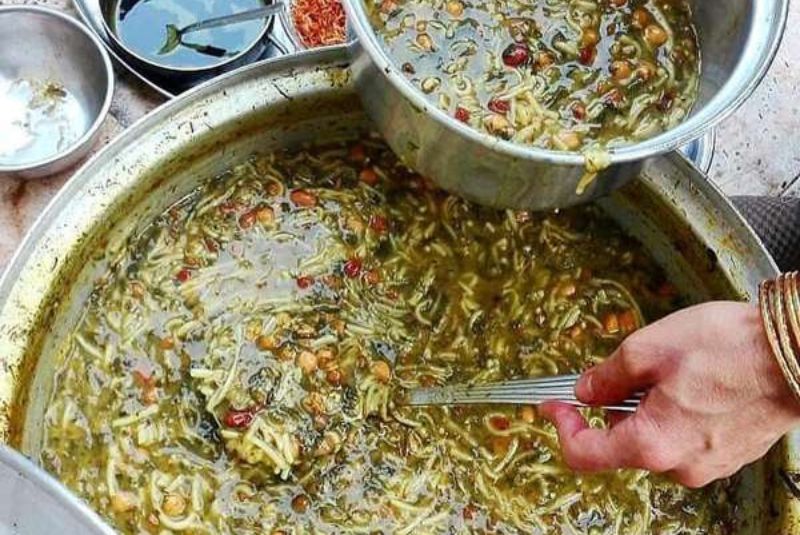
Ash Reshteh plays a central role in Iranian celebrations and gatherings, often being served during special occasions and festive events. It is a dish that brings people together, symbolizing warmth, hospitality, and communal dining. Whether it's a wedding, Nowruz (Persian New Year), or family reunion, Ash Reshteh is often prepared to mark the significance of the occasion, uniting loved ones around the dining table.
Symbolism
The dish represents resilience, as it has endured through generations, remaining a staple of Iranian cuisine. Its rich and hearty ingredients symbolize abundance, prosperity, and the nourishing bond of family and community. Serving Ash Reshteh is a gesture of generosity and goodwill, reflecting the Iranian tradition of hospitality and sharing.
Stories and Folklore
Throughout Iranian folklore, Ash Reshteh is intertwined with tales and anecdotes that highlight its cultural importance. Legends abound about the origins of the dish, with some stories tracing its roots back to ancient Persia. These tales often emphasize the role of Ash Reshteh as a symbol of unity and strength in the face of adversity. Whether shared around a campfire or passed down through generations, these stories add depth and meaning to the cultural heritage surrounding Ash Reshteh.
Health Benefits and Nutritional Value
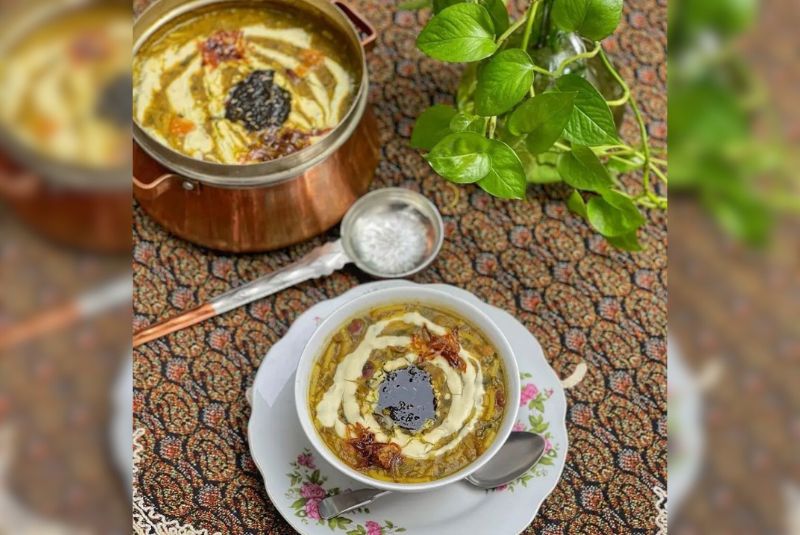
The dish typically includes a variety of legumes such as chickpeas, lentils, and beans, which are excellent sources of plant-based protein, fiber, and essential vitamins and minerals. Additionally, the inclusion of fresh greens like spinach, parsley, and leek provides an array of antioxidants and micronutrients.
Each component of Ash Reshteh contributes to its nutritional profile and offers unique health benefits. Legumes are renowned for their heart-healthy properties, aiding in cholesterol management and promoting digestive health. Meanwhile, leafy greens are rich in vitamins A, C, and K, supporting immune function, bone health, and overall vitality. Garlic and onions, often used for flavoring, possess antimicrobial properties and may help boost immunity and combat inflammation.
Ash Reshteh fits seamlessly into a balanced diet, offering a satisfying and nourishing meal option. Its combination of complex carbohydrates, protein, and fiber helps regulate blood sugar levels, promote satiety, and maintain energy levels throughout the day.
Moreover, the dish's hearty nature and abundance of nutrient-dense ingredients make it a wholesome choice for promoting overall well-being and supporting a healthy lifestyle.
Finally!
Ash Reshteh stands as a culinary masterpiece deeply rooted in Iranian heritage and culture. From its ancient origins to its symbolic significance in Iranian celebrations, this hearty soup embodies the essence of tradition, resilience, and communal dining. As you've learned about its rich history, diverse ingredients, and healthful benefits, I invite you to embark on your own culinary journey and experience the warmth and flavors of Ash Reshteh. Whether shared with loved ones or savored alone, this beloved dish continues to captivate hearts and palates, reaffirming its enduring popularity and timeless place in Iranian cuisine. Embrace the tradition, savor the taste, and immerse yourself in the heritage of Ash Reshteh.
Share your story!
Comment below and let us know about your Experience.
Your story inspires others!


Comment
Leave a Comment